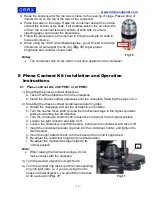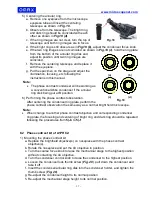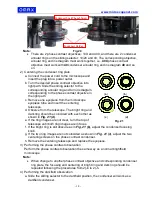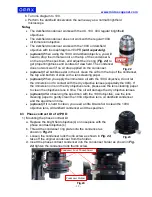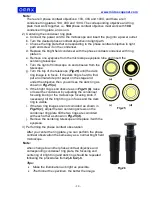
www.microscopenet.com
- 9 -
3.8 Adjusting iris aperture diaphragm
Swing the iris diaphragm lever (
Fig. 9
) left or right to
adjust the aperture size.
Note:
The iris diaphragm is designed to adjust the aperture size,
not to adjust the brightness although the brightness will be
changed when it's adjusted. When aperture is adjusted to
smaller size, the contrast will be increased and the depth
of field will be increased as well. Turn up the intensity of
the light if the image is too dim
.
3.9 Adjusting focus tension
The focus tension has been pre-set at the factory. If
the mechanical stage drops by itself, rotate the
tension adjustment ring (
Fig. 10
) situated between the
coarse focus knob and microscope body on the power
switch side until the tension is in maintained.
3.10 Photo/video observing, capturing and recording
1) Bring the microscope into focus by following the
procedures in
3.5
.
2) Insert the USB cable into the USB port (
Fig. 11
) on
the back of viewing head, and the other end to the computer.
3) Turn on the computer; install the camera following the
manual in the mini CD.
4) Open image observing software to examine (more
details see camera’s manual).
5)
Capture images with manual white balance for image
size of 1280x1024 and 2048x1536 or 1024x768
resolution when using auto white balance.
6) You also can record live videos through the software.
Note:
Please refer to the manual
in the camera’s CD for the
details of installation and operation of the camera.
Do not capturing images of 1280x1024 or 2048x1536 resolution in auto white balance
mode. The captured images may have problems with color rendering at this mode.
3.11
Darkfield condensers observation
(optional, may not included in your package)
Please see
section 7
(
Darkfield Condenser Installation and Operation Instructions
)
3.12 Phase contrast kits observation
(optional, may not included in your package)
Please see
section 8
(
Phase Contrast Kit Installation and Operation Instructions
)
Iris Diaphragm Lever
Fig.9
Focus Tension Ring
Fig.10
USB Port
Fig.11


















